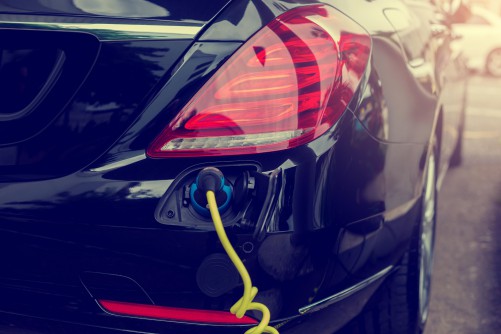Lubricants for Hybrid engines

There is a revolution occurring in motor transport which has not been seen since the demise of steam power in favour of the Internal Combustion Engine (ICE) back in the early 20th century. ICE offered many advantages, including cleaner, more efficient and easier starting, whereas the driving force towards the Electric Vehicle (EV) is almost completely environmental.
Today we are in a transit phase with many variations from EV to Plugin Hybrid, Self-Charging Hybrid, mild hybrid with concept models employing anything from air to pressurised hydraulics. To further complicate the matter, hybrid technology is further split into parallel and series or combinations that can leave the driver submerged in an ever-increasing quagmire of misinformation. Whatever the configuration, a constant is the use of ever smaller engines with increased outputs subjected to a gruelling running regime.
Hybrid vehicles are defined by their ability to use more than one energy source, with electricity normally the additional energy provider. Hybrids rely less on fossil fuels, increased MPG and reduced emissions. Modern hybrid vehicles employ three fundamental parts: An ICE, an electric motor, and battery pack.
Hybrid technology uses everyday driving situations to increase efficiency. At low driving speeds, hybrids can operate as an EV. Regenerative braking recharges batteries by capturing momentum whilst coasting to a stop. Stop-start systems shut down the engine at full stops, which helps cut down idling energy waste.
Whatever the make, model or configuration the simple rule should and continue to be, follow OEM requirements for lubricants and to ensure you always choose a reputable technology provider.
New Era Requires New Technology
For hybrid vehicles, the trend is moving towards even ‘thinner’ oils and today there is even an SAE 0W8. In principle engines run more smoothly and economically with a less viscous engine oil. Yet the thinner the oil, the harder it is to build a hydrodynamic, stable oil film preventing mechanical contact between moving parts.
Hybrid vehicles are propelled with the help of an e-drive, whose battery is recharged where required by an ICE, usually running on petrol. This allows the engine to almost always be operated in the optimum efficiency range. Typical engine oils were originally used in these engine designs, but speciality oils are now increasingly used for hybrid engines as they usually run in a relatively narrow speed range, are subject to the same strain and oils with lower viscosity classes SAE 0W8 to 0W20 are common.
Whilst cold starts can be circumvented, in a frequent interval operation, such as in urban traffic and operation at a nearly constant speed, hybrid engine oils change in different ways to their classic equivalents. However, we are still in the early days of hybrid technology and there are, as yet, no results from long-term use with these engine oils.
ICE has long been associated with continuous running, supplying the driver with an almost inexhaustible supply of power to not only drive the vehicle put also power a myriad of accessories. With the dawn of the hybrid, engines are slowly becoming a second power supply with preferential drive given to electric motors.
Modern hybrid engines are running a new regime – on demand – which employs a large amount of start / stop cycles. As a result, engine temperatures are reduced, there are shorter running times, and fast start up, all of which stresses the lubricant.
Lowering HTHS viscosity should lead to a reduction in power dissipation and thus to fuel savings. If the HTHS viscosity is reduced too greatly and the oil film becomes too thin however, the resistance to wear is a risk. Setting lower limits for HTHS ensures engine oils themselves guarantee the necessary lubricating safety in big end bearings with their large shear forces and high oil temperatures. To further level the surface asperities of paired metal surfaces and therefore to form a continuous lubricating film more easily, additional friction-reducing additives are added to enhance engine protection.
Exol has quietly put its efforts into meeting and exceeding the requirements of this expanding market for high performance, quality lubricants. The Optima range includes both OEM / ACEA and API standard approved oils to meet the demands of both European and non-European hybrid manufactures.
Optima LSVW 0W-20, Optima C5 VC 0W-20 and Optima FS 0W-20 will soon be joined by other sister products within the range to fulfil all the requirements of this fast, evolving market. These products have been specifically formulated to protect smaller engines from wear, corrosion, and sludge formation even at the extremes of motoring. Our extensive laboratory testing facilities ensure each batch of product has a 100% testing regime to ensure not only simple viscometrics are adhered to but additive levels, HTHS, pour point and cold cranking viscosities ensures full adherence to each specification for reliability and protection in service.

